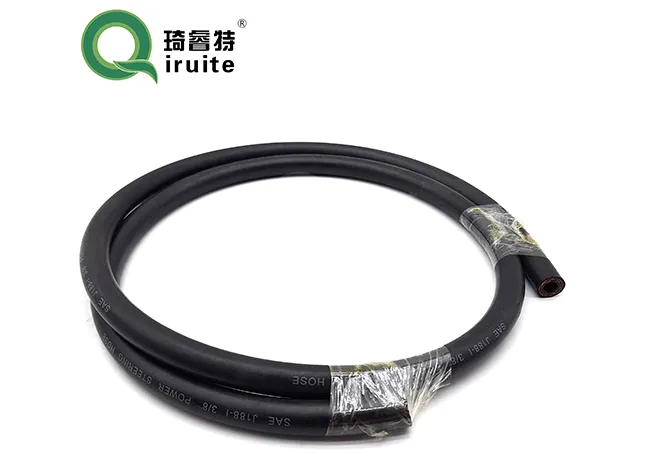Understanding the Main Function of Power Steering Hoses in Vehicle Performance
What is the Primary Purpose of Power Steering Hoses?
Power steering is an essential component of modern automobiles, designed to provide easier steering by augmenting the driver's input. Among the various parts involved in the power steering system, power steering hoses play a critical role. Understanding the primary purpose of these hoses not only highlights their importance in vehicle operation but also reveals the intricacies of automotive engineering.
At its core, power steering hoses serve as conduits for hydraulic fluid, which is crucial for the functioning of the power steering system. When a driver intends to turn the steering wheel, the system utilizes hydraulic pressure to assist in making the steering process smoother and more responsive. Power steering hoses facilitate the movement of this hydraulic fluid between the steering gear or rack and the power steering pump.
The primary purpose of these hoses can be broken down into several key functions. First and foremost, they transport hydraulic fluid under high pressure. The hydraulic fluid is pressurized by the power steering pump, and it flows through the hoses to reach the steering gear. This pressurized fluid produces the necessary force to assist in turning the wheels, making it significantly easier for the driver to maneuver the vehicle, particularly at low speeds or during parking.
Another vital function of power steering hoses is to ensure the efficient transfer of fluid in a controlled manner. The hoses must be designed to withstand high pressure and harsh conditions, given that they are exposed to heat, vibrations, and various road elements. Made of durable materials, power steering hoses must resist wear and tear to prevent leaks. A leak in the hoses can lead to a loss of hydraulic fluid, resulting in compromised steering assistance and potentially dangerous driving conditions.
what is the primary purpose of power steering hoses

Moreover, power steering hoses contribute to the overall reliability of the steering system. As vehicles age, wear and environmental factors can cause deterioration in these hoses. Therefore, regular maintenance and inspections are necessary to ensure their integrity. A faulty power steering hose can lead to a loss of steering assistance, making the vehicle difficult to control. In some cases, a ruptured hose can result in a complete failure of the power steering system, necessitating costly repairs and posing safety risks for the driver and other road users.
It's also important to note that there are typically two types of power steering hoses pressure hoses and return hoses. The pressure hose carries the high-pressure hydraulic fluid from the pump to the steering gear. In contrast, the return hose carries the low-pressure fluid back to the reservoir after it has completed its function. Understanding the distinction between these two types of hoses can aid in diagnosing potential issues within the power steering system.
The advancement of materials and manufacturing processes has led to the use of high-quality rubber, steel, and plastic composites in the construction of power steering hoses. This evolution has enhanced their durability and longevity, allowing vehicles to perform better over extended periods. Nevertheless, even the best hoses will eventually wear out, prompting the need for replacement to ensure safe and effective steering.
In conclusion, the primary purpose of power steering hoses is to transport hydraulic fluid to assist in steering operations, facilitating smoother and more controlled vehicle handling. These hoses are integral to the functionality of power steering systems, requiring regular maintenance and inspection to prevent failures that could impact vehicle safety. As automotive technology continues to evolve, the role of power steering hoses remains crucial, underscoring the importance of these components in everyday driving experiences. For any vehicle owner, understanding the significance of power steering hoses can lead to better maintenance practices and safer driving conditions, ensuring that the power steering system operates at optimal levels.
-
Ultimate Spiral Protection for Hoses & CablesNewsJun.26,2025
-
The Ultimate Quick-Connect Solutions for Every NeedNewsJun.26,2025
-
SAE J1401 Brake Hose: Reliable Choice for Safe BrakingNewsJun.26,2025
-
Reliable J2064 A/C Hoses for Real-World Cooling NeedsNewsJun.26,2025
-
Heavy-Duty Sewer Jetting Hoses Built to LastNewsJun.26,2025
-
Fix Power Steering Tube Leaks Fast – Durable & Affordable SolutionNewsJun.26,2025

